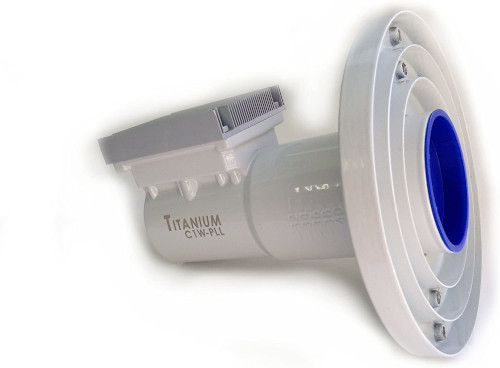GRAVES, SigDigger and direction finding (II)
This is the second part of a series about radio direction finding. Read the first post on the series here
The constraints
It was already mid-summer, July was approaching to its end, and the amount of time I had to implement this direction finding feature for SigDigger was limited. Perseids have their peak activity at around August 12th, and SigDigger (or more precisely, Suscan) suffered from a big shortcoming: it was not designed for MIMO use cases.
In short, SigDigger is mostly a GUI for Suscan, and Suscan treats signal sources as a stream of complex I/Q samples received from somewhere. These samples are delivered to SigDigger at certain sample rate, and are assumed to come from a single RF input. This means that I have only one spectrum every time, and all the inspectors I open are fed by that spectrum alone.
Unfortunately, this use case requires reading samples from both inputs (RX1 and RX2) at the same time, and performing continuous phase comparisons between both. I had two options:
- I refactor Suscan completely, so that sources can now provide more than one sample stream at the same time. This impacts how spectrums should be treated and represented, how FFTs are scheduled among workers, how inspectors are fed, and what kind of UI I present to the user, or
- I write an ugly kludge that multiplexes both channels in frequency, and treat RX1 and RX2 as two channels with different frequencies.
August had already begun, so I settled for the latter. I am sorry.
More...GRAVES, SigDigger and direction finding (I)
As every year since my first experiments with GRAVES (at some point around 2018), I got ready to listen to some falling stones during the Perseids meteor shower. Nonetheless, I wanted to give it an interesting turn this year: instead of listening to the echoes and measuring the mesospheric winds (whose interest is limited), how about doing some direction finding on the received echoes?
This, of course, it is easier said than done. Once again, I was limited by my resources, although not as much as past years. They toy box consisted of the following items: two phased half wavelength dipoles), a couple of VHF bandpass filters, an AntSDR e310 with 2r2t mode enabled and an ugly hack for SigDigger.
In this post I will cover a few of the topics I like the most: space, radio, interferometry (kind of) and programming.
More...SigDigger 0.3.0 is out!
Hi everyone! I am happy to announce the release of SigDigger 0.3.0. This release is the result of one year of intense feature development, code quality improvements and documentation. Yes, you read well, starting from SigDigger 0.3.0, all releases will feature an updated User Manual (download it here!).
This release will not be a mere tag in the Git history, but also a change in the development paradigm. From now on, I will focus my efforts on the development of plugins (yes, SigDigger now supports plugins! See an example APT decoder plugin here), fixing bugs and documenting existing features. The rationale for this decision is that you can only make generic signal analysis up to certain point. Past this point, you will need more and more specialized features, and this will be possible by means of the extensible inspector programming interface. Documentation of SigDigger’s internal API is on its way.
More...SigDigger 0.2 - Using suscli
As the latest SigDigger 0.2 release included lots of new features that are difficult to summarize in GitHub’s release notes, I will write a series of posts about typical use cases for this features. It will not have a regular schedule (I am still writing down my master thesis, plus other duties far from my computer).
This first post will be dedicated to suscli, a command-line front-end for Suscan that does not depend on a graphical environment.
More...Amateur radioastronomy in 4 GHz (II)

Alright, so earlier last summer I managed to gather all the necessary parts for my DIY C-Band radiotelescope. My initial goal was to buy a primary focus dish somewhere near Madrid. Unfortunately, those are extremely difficult to find in Spain because reasons, at least at a reasonable price. I had to switch to plan B, this is, a medium-sized 110x120 cm offset antenna that was eventually purchased from diesl for an extremely reasonable amount (65€). Since the LNB is designed for primary focus dishes, I had to buy a conical scalar ring so that the dish was completely illuminated (hence reducing spillover losses to a minimum).
More...